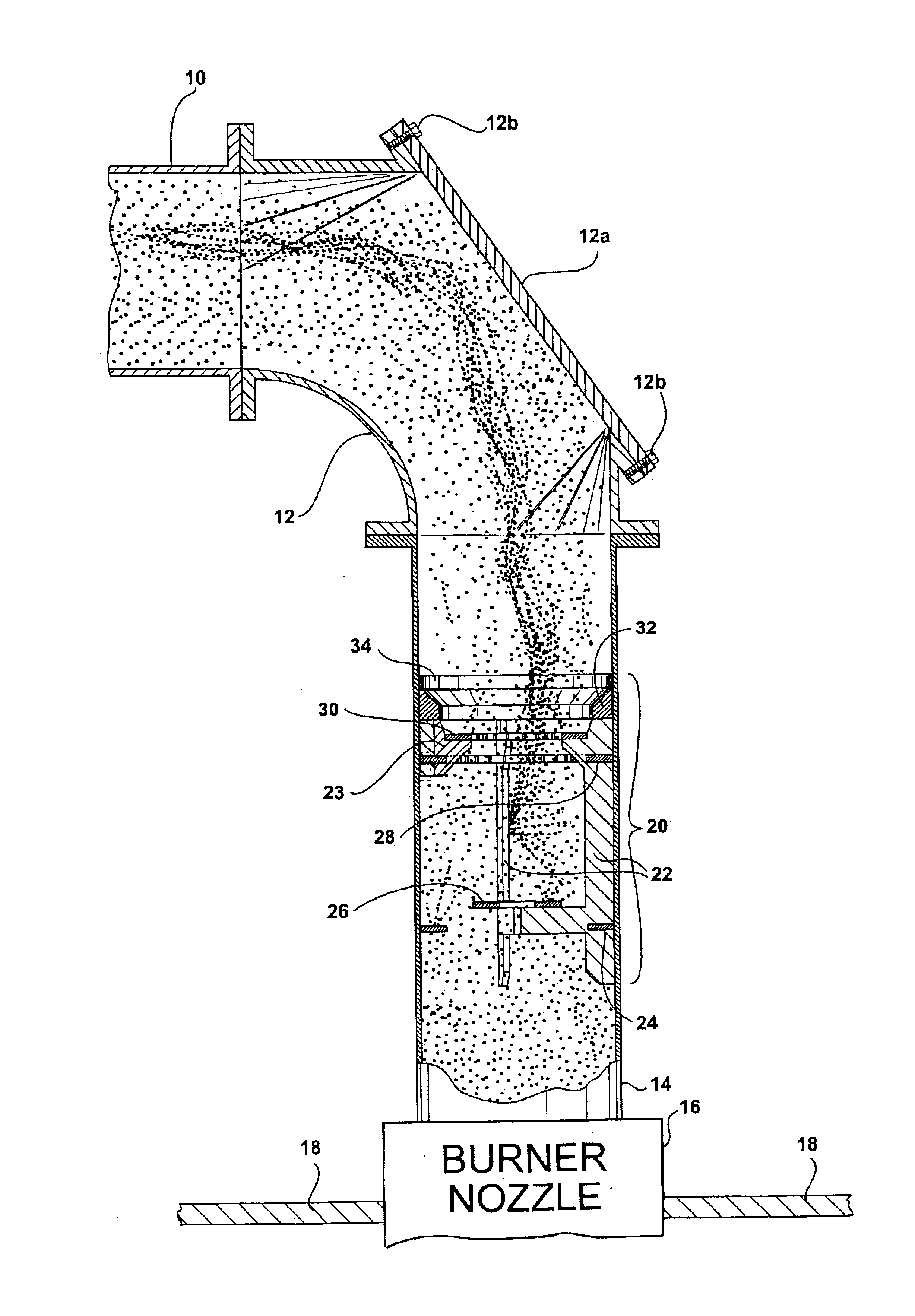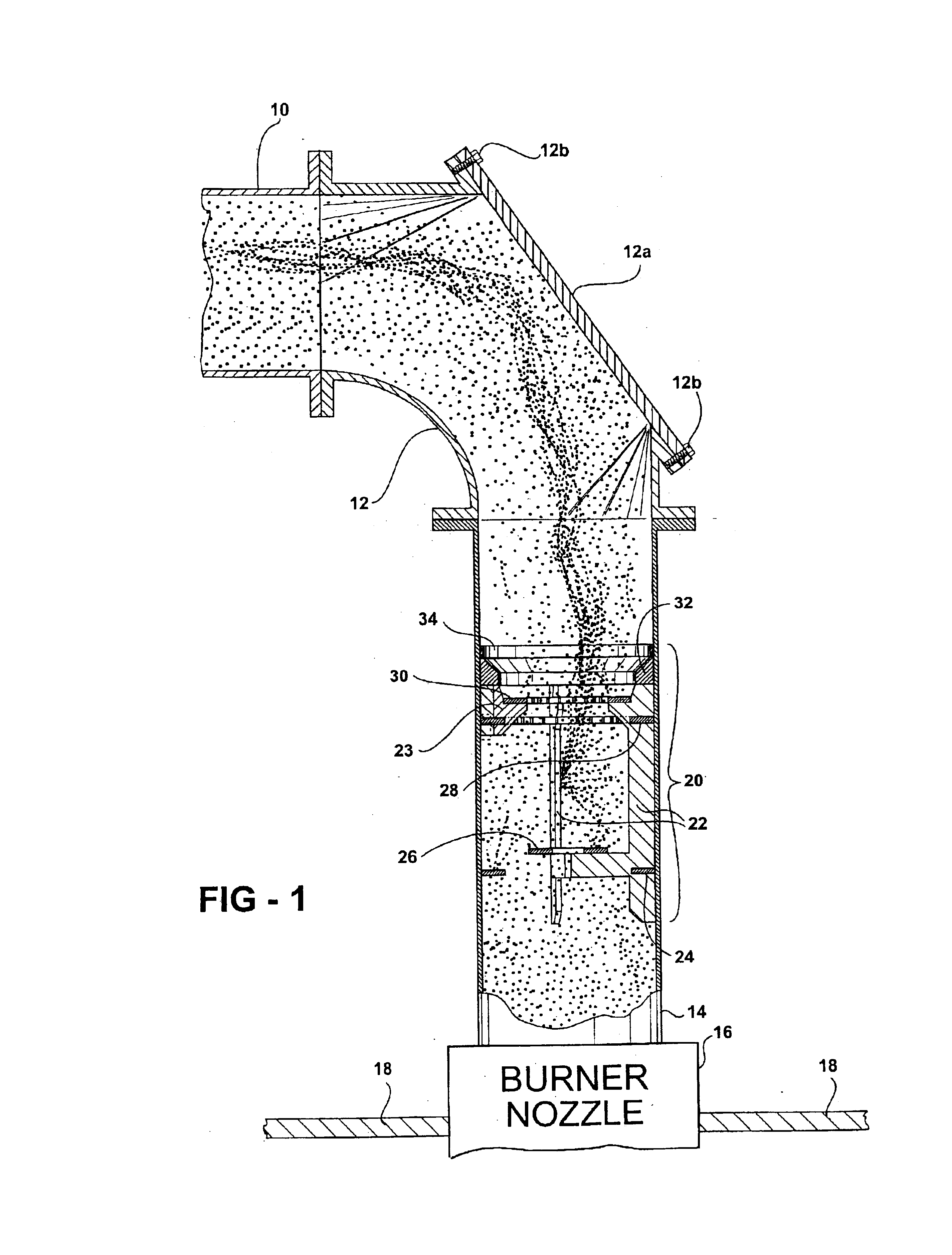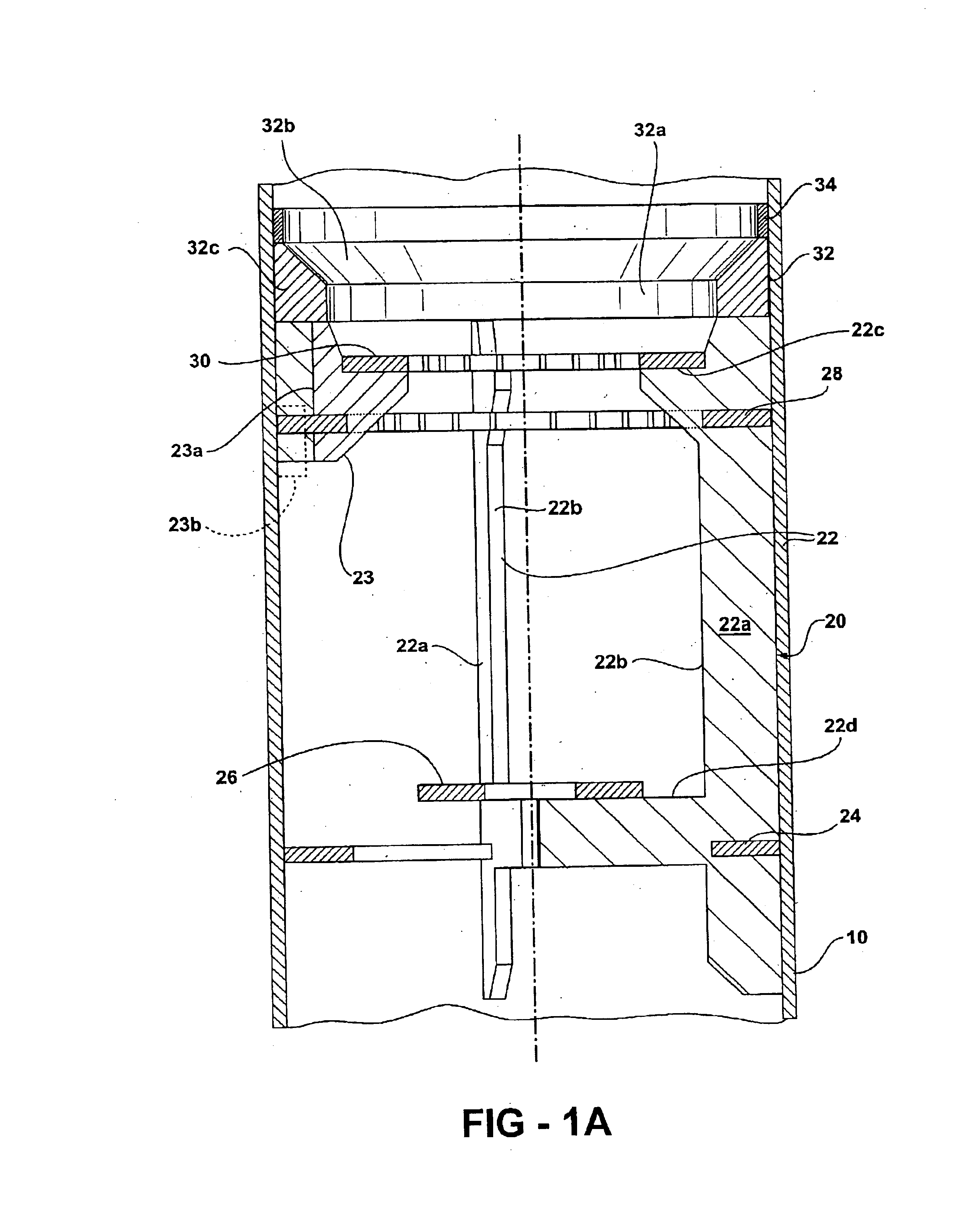Diffuser insert for coal fired burners
a technology of diffuser insert and coal burner, which is applied in the direction of gas current separation, combustion types, lighting and heating apparatus, etc., can solve the problems of loss on ignition, distribution problems tend to occur, and unbalanced stream, and achieve the effect of simplifying the installation tasks
- Summary
- Abstract
- Description
- Claims
- Application Information
AI Technical Summary
Benefits of technology
Problems solved by technology
Method used
Image
Examples
Embodiment Construction
Referring first to FIG. 1, a pipe 10 delivers a flow of pulverized coal and air from a source of pulverized coal such as a pulverizer / classifier (not shown) to a burner nozzle 16 mounted in the wall of a combustion chamber 18. The end of pipe 10 is re-routed into alignment with burner nozzle 16 in common fashion, using an elbow pipe section 12 and a short length of connector pipe 14 between the elbow and the burner nozzle. This general arrangement of piped coal supply from a classifier to a combustion chamber is well known, and the specifics of burner nozzle, combustion chamber, piping, and classifier can vary as is known to those skilled in the art.
As noted above, the typical combustion chamber is supplied with many burner nozzles, for example from two to twelve. Attempts are usually made upstream, sometimes beginning at the classifier itself, to ensure that the flow of pulverized coal is evenly balanced among the burners. Once the coal reaches the burner nozzles, the nozzles thems...
PUM
 Login to View More
Login to View More Abstract
Description
Claims
Application Information
 Login to View More
Login to View More - R&D
- Intellectual Property
- Life Sciences
- Materials
- Tech Scout
- Unparalleled Data Quality
- Higher Quality Content
- 60% Fewer Hallucinations
Browse by: Latest US Patents, China's latest patents, Technical Efficacy Thesaurus, Application Domain, Technology Topic, Popular Technical Reports.
© 2025 PatSnap. All rights reserved.Legal|Privacy policy|Modern Slavery Act Transparency Statement|Sitemap|About US| Contact US: help@patsnap.com



